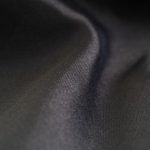When you're looking to protect your fabrics with Scotchgard, you'll want to start by ensuring they're clean and dry. You'll apply the spray in a well-ventilated area, holding the canister at a proper distance for even coverage. It's important to focus on seams and high-contact areas for the best results. After the initial application, you'll need to let it dry before considering any additional coats. But what happens if you skip a few steps or don't maintain it properly? Understanding the nuances can make all the difference in the longevity of your fabric protection.
Table of Contents
Key Takeaways
- Clean and dry the fabric thoroughly before applying Scotchgard for optimal protection and longevity.
- Shake the canister well and hold it 6-8 inches from the fabric while applying in a sweeping motion.
- Focus on seams and high-contact areas to ensure thorough protection, applying a second coat if necessary.
- Allow at least 2 hours for initial drying, with full curing time taking up to 72 hours for effective barrier.
Understanding Scotchgard Benefits
Scotchgard offers a protective shield for your fabrics, making it easier to keep them clean and stain-free. By applying Scotchgard, you're investing in the longevity of your upholstery, clothing, and other fabric items. Its unique formula creates a barrier that repels water and stains, preventing spills from soaking in and causing permanent damage. This means you can enjoy your favorite fabrics without the constant worry of accidental spills.
Another major benefit is the time you'll save on cleaning. With Scotchgard, routine maintenance becomes much simpler. You won't need to scrub or treat stains as frequently, allowing you to spend more time enjoying your space and less on upkeep. Plus, this protection helps your fabrics resist fading from sunlight, preserving their vibrant appearance longer.
Scotchgard is also versatile. You can use it on various materials, including upholstery, carpets, and even clothing. This adaptability makes it a valuable addition to your cleaning routine.
Preparing Your Fabric
Before applying Scotchgard, you should always clean and dry your fabric to ensure the best protection. This step is crucial, as any dirt or residue on the fabric can interfere with Scotchgard's effectiveness. Start by checking the care label for cleaning instructions. If the fabric is machine washable, give it a cycle in the washer, and let it air dry completely. For delicate materials, spot cleaning might be necessary.
It's important to note how much you value your fabric investments. To help you visualize why preparation matters, consider the following table:
| Emotion | Action | Result |
|---|---|---|
| Frustration | Ignoring stains | Compromised appearance |
| Relief | Proper cleaning | Enhanced longevity |
| Pride | Protective treatment | Maintained value |
| Satisfaction | Regular maintenance | Stress-free enjoyment |
Application Process
To effectively apply Scotchgard, find a well-ventilated area and hold the canister about six to eight inches away from the fabric surface. Shake the canister well before use to ensure the product is mixed properly.
Begin spraying in a sweeping motion, covering a small section of the fabric. Be sure to apply an even coat without over-saturating any specific spot. It's crucial to keep the spray at a consistent distance to achieve uniform coverage.
As you spray, make sure to pay attention to the seams and high-contact areas, as these spots tend to absorb more moisture and dirt. If you're treating a large piece of fabric, consider dividing it into smaller sections to ensure thorough protection.
After you've applied the first coat, allow it to dry for a few minutes before assessing the coverage. If you notice any areas that seem less protected, apply a light second coat, again using the sweeping motion.
Always follow the manufacturer's instructions for the best results. Once you've completed the application, clean up any overspray immediately to prevent damage to surrounding areas.
Drying and Curing Time
Allow the fabric to dry completely for at least two hours before using it to ensure optimal protection. While it might be tempting to speed up the process, rushing can compromise the effectiveness of Scotchgard. Proper drying is crucial for achieving that reliable barrier against spills and stains.
Here's a quick reference table to help you keep track of drying and curing times:
| Task | Time Required |
|---|---|
| Initial Drying | 2 hours |
| Light Use | 24 hours |
| Full Curing | 72 hours |
| Avoid Heavy Use | Until fully cured |
| Reapplication (if needed) | Every 6 months |
After the initial drying period, you should wait 24 hours before using the fabric lightly. For full curing, allow up to 72 hours. During this time, avoid heavy use to let the Scotchgard work its magic. If you notice any areas needing extra protection, consider reapplying every six months. This will help maintain that layer of defense and keep your fabric looking great!
Maintenance Tips for Longevity
Once you've applied Scotchgard and ensured proper drying and curing, maintaining that protective barrier is key to keeping your fabric in top shape. Regular upkeep will help extend the life of your fabric and keep it looking new.
Here are some tips to help you maintain that protection:
- Clean spills immediately: If something spills on your fabric, blot it up right away with a clean cloth. This prevents stains from setting in and allows the Scotchgard to do its job effectively.
- Avoid harsh cleaners: Stick to mild detergents for cleaning your fabric. Harsh chemicals can break down the Scotchgard layer and reduce its effectiveness over time.
Frequently Asked Questions
Is Scotchgard Safe for Pets and Children?
Yes, Scotchgard is generally safe for pets and children once it's fully dried. Just ensure you follow the application instructions carefully, and keep them away from treated areas until everything's completely set to avoid any potential issues.
Can I Use Scotchgard on Upholstery and Carpets?
Yes, you can use Scotchgard on upholstery and carpets. Just ensure the fabric is clean and dry before applying. It'll help repel stains and spills, keeping your furniture looking fresh and new for longer.
How Long Does Scotchgard Protection Last?
Scotchgard protection typically lasts about a year, depending on the fabric and usage. After frequent cleaning or heavy use, you might want to reapply it to maintain its effectiveness and keep your items looking fresh.
What Fabrics Should I Avoid Using Scotchgard On?
You should avoid using Scotchgard on fabrics like silk, leather, and any material labeled as non-water-resistant. These fabrics can get damaged or lose their texture, so it's best to protect them with alternative methods.
Can I Reapply Scotchgard After Washing the Fabric?
Yes, you can reapply Scotchgard after washing the fabric. Just ensure the fabric is completely dry before applying. This helps maintain the protective barrier, keeping your items safe from spills and stains effectively.
- How Does Ring Spun Cotton Affect Garment Fit and Shape Retention? - August 13, 2024
- What Are the Challenges in Producing Ring Spun Cotton? - August 13, 2024
- Is Ring Spun Cotton Suitable for Plus-Size Clothing? - August 13, 2024







